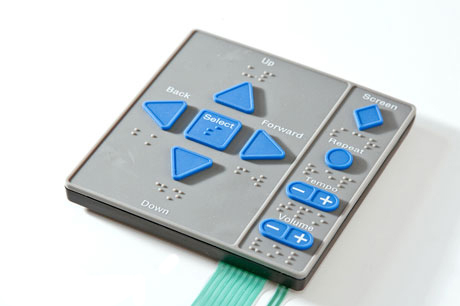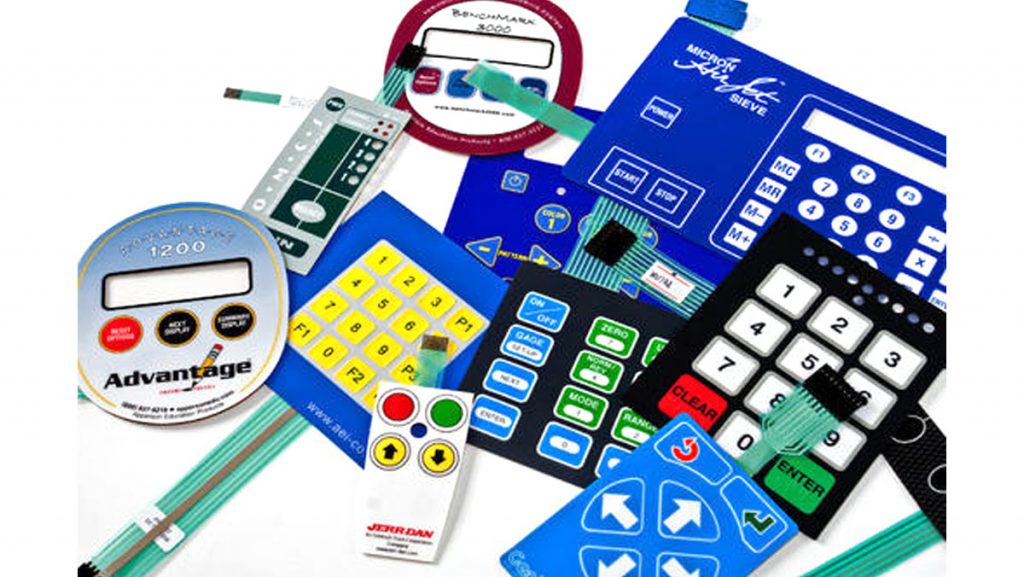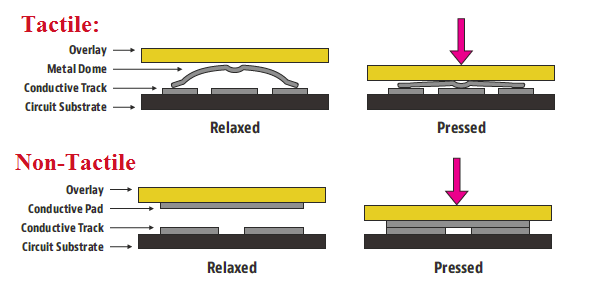Understanding the Relevance of Membrane Switches in Individual Interfaces
Membrane switches are essential parts in the design of effective customer interfaces, helping with not only functionality but additionally boosting aesthetic allure and user interaction. As we discover the future fads and various advantages associated with Membrane innovation, it becomes clear that these switches are a lot more than just parts; they stand for a convergence of advancement and functionality.
What Are Membrane Buttons?

The spacer layer, which has glue buildings, allows for the splitting up of the circuit layer from the overlay, guaranteeing that the button remains in a non-activated state until pushed. When pressure is put on the overlay, it compresses the spacer layer, connecting the space and finishing the circuit in the underlying layer. This layout not only decreases the physical area needed for standard mechanical switches however also boosts the durability of the device, as Membrane switches are usually immune to dirt, wetness, and various other ecological variables.
Frequently located in applications ranging from customer electronic devices to medical gadgets, Membrane switches are indispensable to contemporary technology, offering a effective and user-friendly user interface that straightens with modern layout requirements.
Advantages of Membrane Switches
While numerous switch technologies exist, Membrane Switches deal unique benefits that make them specifically desirable in numerous applications. Among the main benefits of Membrane buttons is their small style, which enables for space-saving executions in tools where property is restricted. Their slim account not just boosts aesthetic allure yet also assists in lightweight building and construction.
Another significant advantage is their resistance to environmental aspects. Membrane switches are typically secured versus dampness, dirt, and impurities, making them perfect for use popular atmospheres, such as clinical tools and commercial equipment. This resilience extends the lifespan of the switch, decreasing upkeep costs and boosting integrity.
Moreover, Membrane buttons can be tailored to satisfy details style demands, integrating one-of-a-kind graphics and colors that improve user communication. Their responsive comments alternatives can additionally be customized to supply a rewarding customer experience. Additionally, Membrane switches are affordable, specifically in high-volume applications, as they can be produced effectively.
Applications in Various Industries

In the customer electronic devices industry, Membrane switches are widespread in devices such as microwaves, washing machines, and push-button controls. Their tactile comments and visual options enhance customer experience while supplying a smooth, modern appearance. Furthermore, automotive suppliers make use of Membrane switches in dashboard controls and infomercial systems, where area is limited, and individual engagement is important.
In addition, the commercial field leverages Membrane switches in control panels for machinery and devices, enabling user-friendly operation in often extreme settings. Their resistance to chemicals and dampness guarantees durability and dependability in these applications. Overall, the adaptability of Membrane Switches adds dramatically to their widespread usage, making them essential in different technological domain names.
Design Factors To Consider for Membrane Switches

When making Membrane switches, numerous vital considerations should be considered to make sure optimum functionality and individual experience. To start with, the choice of materials is important; choosing sturdy, top go to this web-site notch substratums can improve the switch's durability and resistance to ecological factors such as dampness and temperature changes.
Second of all, the style of the graphic overlay ought to prioritize clearness and convenience of use. Icons and text should be clear, and the layout must facilitate instinctive interaction (membrane switches). Additionally, tactile responses is vital; integrating a tactile dome or other devices can boost the customer experience by supplying physical verification of activation
One more crucial variable is the switch's electric performance. Designers should ensure that this contact form the conductive traces are appropriately created to minimize resistance and avoid signal disturbance. This involves analyzing the called for actuation force and guaranteeing compatibility with the digital components they will user interface with.

Future Fads in Membrane Modern Technology
As technology continues to advance, Membrane buttons are positioned to develop dramatically, driven by developments in materials and producing techniques. One arising pattern is the consolidation of innovative materials, such as versatile substratums and conductive inks, which enhance durability and minimize the overall weight of Membrane buttons. These products not just enhance the tactile response however also allow for the design of buttons that can hold up against harsher environmental problems.
Moreover, the assimilation of touch-sensitive technologies is changing typical Membrane Switches right into even more interactive individual interfaces. Capacitive touch sensing units embedded within Membrane switch panels can give a much more intuitive and receptive individual experience, straightening with the expanding demand for streamlined, contemporary styles in customer electronics.
Additionally, advancements in printing methods, such as digital and 3D printing, make it possible for quick prototyping and personalization of Membrane buttons. This flexibility allows suppliers to respond faster to market demands and customer preferences.
Lastly, sustainability is ending up being a substantial focus, with makers exploring green materials and processes. As these fads unravel, the future of Membrane innovation assures boosted performance, aesthetic charm, and ecological duty, strengthening their function in innovative customer interfaces across various industries.
Conclusion
To conclude, Membrane Switches stand for a vital component in the style of interface, combining functionality with aesthetic versatility. Their benefits, consisting of toughness and resistance to environmental factors, make them ideal for varied applications across different markets. Thoughtful design considerations improve individual communication and experience. As advancements in innovation continue, the development of Membrane switches is expected to additional fine-tune user interfaces, driving development and improving usability in a progressively complex technological landscape.
Membrane switches are integral parts in the style of efficient customer Read Full Article interfaces, assisting in not just performance however also boosting aesthetic appeal and individual communication.Membrane Switches serve as a crucial element in different individual interfaces, promoting a smooth communication between customers and digital devices.While many button technologies exist, Membrane Switches deal distinctive advantages that make them especially desirable in various applications.Furthermore, Membrane buttons can be tailored to satisfy specific layout demands, incorporating one-of-a-kind graphics and shades that enhance customer communication.In final thought, Membrane Switches represent a vital part in the layout of individual interfaces, combining functionality with visual flexibility.
 Jeremy Miller Then & Now!
Jeremy Miller Then & Now! Keshia Knight Pulliam Then & Now!
Keshia Knight Pulliam Then & Now! Samantha Fox Then & Now!
Samantha Fox Then & Now! Bill Cosby Then & Now!
Bill Cosby Then & Now! Catherine Bach Then & Now!
Catherine Bach Then & Now!